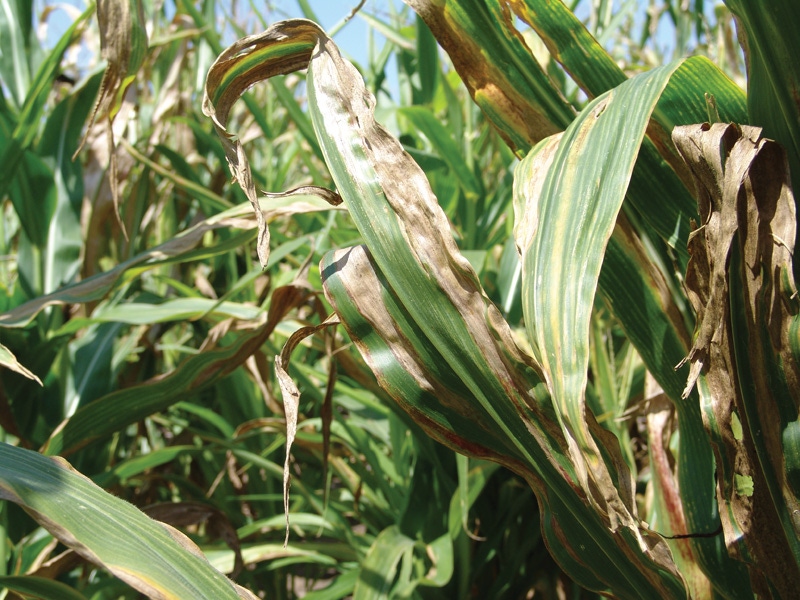January 31, 2012

Not long ago, Goss’s wilt rarely caused a stir among corn growers east of the Mississippi. The 2011 season changed all of that.
“Goss’s wilt was discovered several decades ago in Illinois, but it’s only been a sporadic problem in certain fields until recently,” says Suzanne Bissonnette, University of Illinois Plant Clinic director. “Over the last three to four years, the disease has been building in severity across the state, mostly in fields that have been planted to continuous corn. This year, it was an epidemic.”
Fields previously infected with Goss’s wilt were susceptible to infections in 2011, Bissonnette adds. “Some of the worst-hit fields this year have had pockets of Goss’s wilt infections for several years, but this year the disease spread across the entire field."
Once the bacterium gains hold in a field, it is an ongoing threat to yields, reports Tamra Jackson, extension plant pathologist, University of Nebraska.
Limited treatment
Treatment options to control the disease in corn are limited. “There is no rescue treatment for Goss’s wilt that we can recommend yet,” Jackson says. “Alternative products, like bactericides, are being tested, but the results are still either inconclusive or inconsistent.”
Bissonnette agrees. “Goss’s wilt is caused by a bacterium, not a fungus, so no fungicides will work to control it,” she says.
Bissonnette and Jackson recommend farmers send leaf samples of plants suspected to be infected to labs during the growing season to verify which fields have the disease. They advise that, after corn harvest, farmers rotate to a non-host crop like soybeans, being vigilant to control weedy grasses and selecting the most resistant hybrids to Goss’s wilt when planting corn to infected fields again.
Another management concern is the residue left behind from infected plants after harvest. Jackson advises farmers to do fall tillage in problem fields after corn production. Tillage helps to reduce the amount of bacteria that survive in the field to threaten future corn crops, she says.
Cycle of Goss’s wilt
“The first phase of Goss’s wilt is a foliar blight that typically develops late in the season so that the plants aren’t necessarily killed prematurely,” Jackson says. “However, in the systemic wilt phase, the bacteria infect the crop as early as the V6 growth stage and move throughout the plant’s entire system. It is systemic wilt that kills the plant very prematurely.
“In western Nebraska and northeastern Colorado, there are areas that have had Goss’s wilt problems for six years or more, and those are the areas where we sometimes see the systemic wilt now that only had foliar blight in previous years,” she says.
Farmers should carefully manage infected fields, Jackson advises. “If you’ve got the systemic wilt, that’s the worst-case scenario, because seed representatives tell me that even the really good resistant hybrids are limited in effectiveness to that phase of the disease,” she says.
About the Author(s)
You May Also Like




